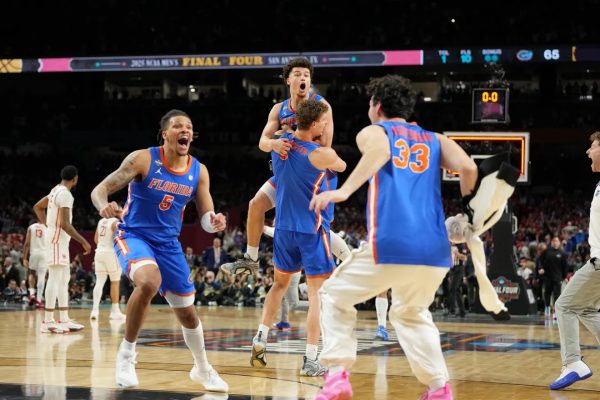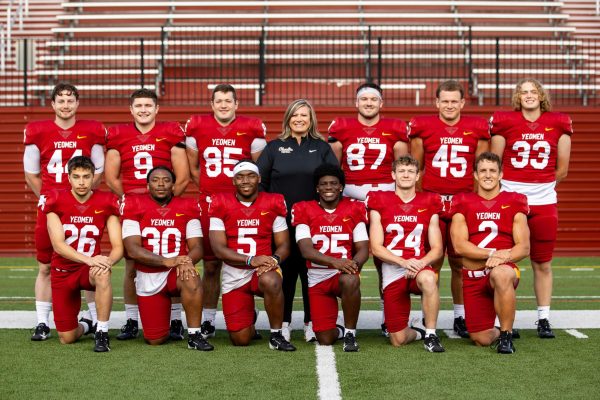In Defense of Sports Journalism
When Sports Illustrated published senior writer Chris Ballard’s remarkable feature on former New Orleans Pelicans Head Coach Monty Williams a year and a half ago, I was a first-year sitting in the very back of my Intro to Psychology class.
The article was titled “‘You Can’t Give In’: Monty Williams On Life After Tragedy.” I read it from beginning to end without lifting my eyes from my laptop screen a single time. I couldn’t.
Then I read it again. I’ve never really been one to pay attention during lectures.
While other students charted the differences between classical and operant conditioning in their notebooks, I sank down in my chair, awestruck.
Susannah Donaldson was under the influence of meth when she accelerated to more than twice the speed limit of 40 miles-per-hour and struck the car that carried Williams’ wife Ingrid, and three of their five children head-on. Ingrid and Donaldson were both killed in the accident. Only one year had passed since Williams lost his partner of 26 years when Ballard began writing his piece.
The article stuck with me for a long time. How did Williams put on a brave face after saying goodbye to the woman who helped him through the darkest times of his life, when he contemplated suicide after being diagnosed with hypertrophic cardiomyopathy? Why did he ask for prayers for Donaldson’s family when no one would have blamed him for acting rancorously instead?
How did Ballard turn an unimaginable tragedy into a beautiful story about faith, forgiveness, and persistence?
Every now and then, a sports journalist produces a masterpiece that reminds us why we fell in love with sports in the first place — for me, this was one of those.
If I want to know how my favorite team did in last night’s game, I can pull up ESPN and get a recap in seconds. But as a die-hard fan, I want more. I want to know what goes on in the Cleveland baseball clubhouse before the team takes the field. How did José Ramirez’s childhood in the Dominican Republic shape him into the player he is today? When Francisco Lindor points at the sky after reaching base safely, who is he saluting?
I invest in certain teams because I am captivated by their history and the players’ personalities. If I hadn’t read LeBron James’ first-person essay, “I’m Coming Home” — as told to Lee Jenkins, former lead NBA writer for Sports Illustrated — his return to the Cavaliers in 2014 wouldn’t have meant much to me but more wins.
After his letter was published, James’ second stint in Cleveland became personal — for James, for fans, and for me. In a little over 1,000 words, James made it clear that his motivations for winning a third championship title in Cleveland were far more heartfelt than for the two he won with the Miami Heat.
James was “a kid from Northeast Ohio” again, ready to deliver on his promise to bring a championship home and give back to the city that raised him through the LeBron James Family Foundation.
Sports journalism allows people like James and Williams to transcend their public image as just athletes or coaches. It exposes who athletes truly are, on and off the court, field, or pitch.
I had already known that Williams was a standout talent at the University of Notre Dame and a first-round draft pick by the New York Knicks, but it was Ballard who taught me that Williams couldn’t have succeeded without Ingrid’s patience and support.
Ballard takes us back to Notre Dame in 1989 when Williams was too cool to make a move on Ingrid, yet too enthralled by the “girl drinking water instead of beer” to stay away.
Through Ballard we sit at Ingrid’s memorial among 1,000 family members, friends, players, and coaches. We watch Williams look up from the lectern and into the crowd. All he can see is his five children staring back at him.
“You just can’t quit,” Williams tells them. “You can’t give in.”
Sports aren’t pure entertainment; they’re inspirational, and they mean something. I’m inspired when my softball teammate cuts two minutes off of her mile time just two weeks after deeming it impossible. It means something when I see a father — still in his dress pants and dress shirt from work — playing catch with his young son in the driveway. When I see fans from rival franchises choosing to bond over their shared love of the game, rather than brawl over their differences, I remember the unifying power of sports.
It was for this reason that my heart sank when the New York Daily News announced at the end of July that half of its newsroom was being laid off. A sports section that once carried 35 staffers now has 9.
Unlike many other occupations, sports journalists don’t write for money or status. They work long, stressful hours for little pay.
They write because the stadium is their second home. It’s the crack of a bat and the light thud of a baseball hitting the inside of a mitt that reminds them of what a joy it is to be a sports fan. They witness athletic greatness on a nightly basis and have access to all of our favorite players, bridging the gap between us and them.
Can you imagine how dull sports would be if we knew nothing about the teams we cheer so loudly for?
Because of the work that sports journalists do, the best moments in sports history are never lost, and the legends are never forgotten. There is more to a coach than wins and losses, and there is more to an athlete than their performance on any given day.
This year, the Review is setting up more interviews and probing farther into the lives of those involved in Oberlin athletics so we can give you information that you can’t find anywhere else.
So far this semester, College sophomore and football player Khalid McCalla wrote a courageous column pushing football players to acknowledge the importance of mental health; College first-year Luke Sprecher gave an inside look into how first-year Ian Ashby balances being a Conservatory student and member of the varsity baseball team; and College senior and Sports Editor Ify Ezimora argued why it’s important to recognize student-athletes’ accomplishments outside of athletics.
To enjoy the athletics section of the Review or any newspaper, you don’t have to like sports. You just have to like people. Every athlete has a story worth reading about.





